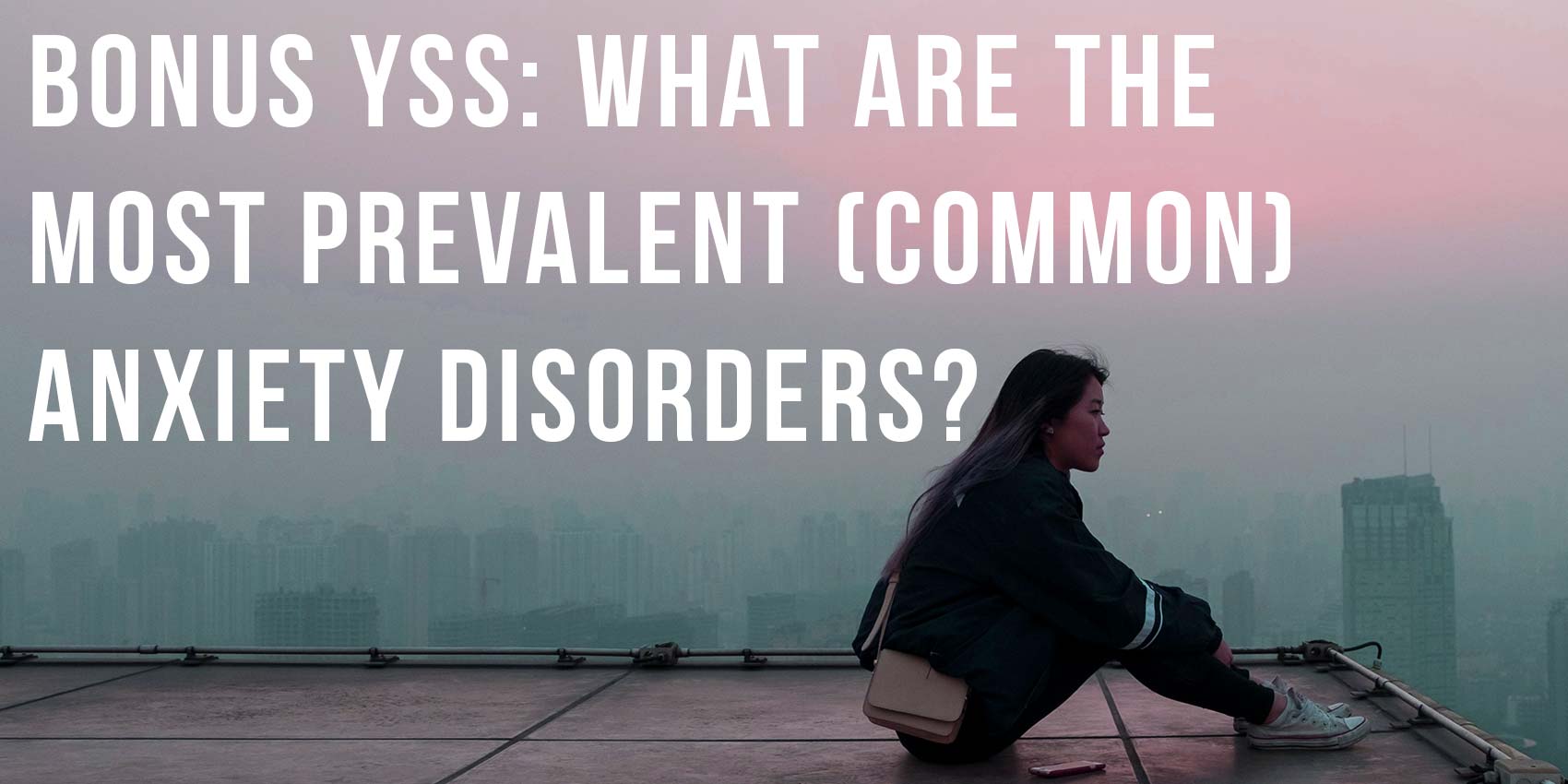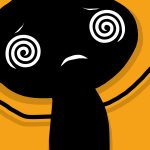14 Nov Bonus YSS: What are the most prevalent (common) anxiety disorders?

Below is a list of anxiety disorders. This list is provided as a general guideline to help you understand what some of the common disorders are. If you are concerned that you may have an anxiety disorder, again, please talk to a professional.
Many anxiety disorders exist. Here, we will cover five:
Panic Disorder: A panic disorder is characterized by recurrent (repeated) and unexpected panic attacks. A panic attack is a short lived (from a few minutes to usually less than an hour) experience of intense fear, worry or anxiety. The person will feel bodily sensations such as a rapid heart beat, sweating, nausea, headaches, shaking, chest pain. Sometimes this feels like a heart attack and can be misdiagnosed.
Phobias: Phobias are when people fear specific things, situations, people, or events. The fear is so intense that they change their lives (sometimes to alarming degrees) to avoid the thing that produces the fear/anxiety. Many common phobias exist such as spider phobias (arachnophobia) and a fear of heights (acrophobia). The two most common phobia disorders (where the fear causes severe impairment of daily functioning) are agoraphobia and social phobia:
- Agoraphobia: Agoraphobia is the fear of being in public spaces, especially if escape from the place seems difficult. The fear is usually worse when the place is crowded and egress (exit) or help seems unavailable or unlikely. The exact cause of agoraphobia is unknown but researchers believe that agoraphobia develops from the fear of having a panic attack in public.
- Social phobia: Social phobia is the fear of being judged by other people. Everyone fears being judged from time to time, but people with a social phobia are excessively concerned about what others will think of them and are easily embarrassed. They fear doing even the most common things in front of others. The fear is so great that they will often refuse to go anywhere or see people in social situations.
Obsessive Compulsive Disorder: OCD is the combination of two factors: a thought and a deliberate (meaning intentional) response to the thought, that become out of control.
To illustrate this, the thought may be, I think I forgot to pack all my books for school. Not a problem. So then the typical response would be to check the book bag before leaving for school. All set, books are in there, let’s go! That is normal. But when someone has that same thought over and over, even after checking the bag, that thought is called an obsession. Even though the person may have checked the bag three minutes ago, the person with OCD will need to check again, and again, and again… Wait, I think I checked it, but not well enough. I might have missed something. I need to make triple sure. When the response is then repeated over and over to calm the thought, it is called a compulsion. Hence, obsessive-compulsive.
So in this example, OCD might be diagnosed when you have to check your bag so many times that you miss the bus everyday. OCD can be challenging for anyone on a schedule (and most of us are on a schedule). It will interfere with work and relationships because a person with OCD is so busy washing hands or checking the stove or rearranging the backpack, that he or she misses everything else.
People who have OCD can be helped through treatment to refocus their attention.
Post Traumatic Stress Disorder (PTSD): To qualify for this disorder, one must first have experienced a very traumatic event such as war combat, a terrible car accident, being attacked by a stranger, etc. Afterwards, people with PTSD re-experience the event over and over in their dreams or in waking thoughts to the point that they have high levels of anxiety and have difficulty functioning. Please see the post on trauma to learn more.
Generalized Anxiety Disorder (GAD): GAD is characterized by excessive and/or continual worry with physical symptoms that cause significant inability to be social, work, and play. Basically, people with GAD worry about everything. They experience anxiety all of the time without a particular key stressor. The physical symptoms include racing heart, shaking, sweating, often coupled with sleeping problems.
[Sources for these posts include: https://steinhardt.nyu.edu/appsych/opus/issues/2012/fall/many; Anxiety and Depression Association of America; anxiety.org.]




WLKHS1306
Posted at 13:07h, 08 OctoberI learned a lot about PTSD. I knew that people who suffered from it remembered the moments I did not know that people dreamed about their past traumatic experience. It is really eye opening to see what these people go through.
WLKHS1305
Posted at 13:06h, 08 OctoberI think the most prevalent disorders are PTSD and OCD because PTSD comes mostly from people who have been to war or got in a bad car accident and its very clear to see and communicate with the people that have it and OCD because people say they have it when they don’t which causes people to learn about it out of curiosity and from there be able to notice who has it
WLKHS1310
Posted at 13:05h, 08 OctoberThe most common anxiety disorders are panic disoders, phobias, OCD, PTSD, and generalized anxiety disoder.
WLKHS1301
Posted at 13:01h, 08 OctoberI leanred the most of panic disorder, because i have come to realize that i very commonly have panic attacks.
WLKHS1206
Posted at 14:32h, 07 OctoberI learned most about Agoraphobia, because I have never heard of it before and how it affects people in their everyday life. I did not know how difficult this disorder could be to live their everyday life.
WLKHS1213
Posted at 14:28h, 07 OctoberI learned the most about phobias because I used to think that phobias were just normal fears that everyone experienced, but phobias are actually a serious disorder, and anyone affected by them could have to change the way they live their lives.
WLKHS1211
Posted at 14:27h, 07 OctoberI learned the most about people who have a panic disorder. People who have this are more likely to have panic attacks, and could have them when they have stress put on them.